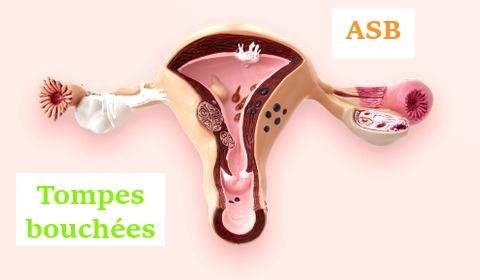
Adenomyosis What is it ?
- By narso10
- On 2025-10-07
- 0 comments
Among the wide range of gynecological conditions that affect women, adenomyosis occupies a rather special place due to its complexity, chronic evolution, and profound impact on quality of life. Although it often remains underdiagnosed, it is far from rare. Essentially, adenomyosis occurs when endometrial tissue, which normally lines the uterine cavity, invades the uterine muscle layer known as the myometrium.
In simpler terms, adenomyosis can be described as a situation where the tissue that should grow only inside the uterus begins to grow within the muscular wall of the uterus itself. Consequently, this abnormal growth leads to uterine enlargement, chronic inflammation, painful menstruation, and abnormal bleeding.
Please contact us to benefit from our support.
Whatsapp
Call : 002290160081765
E_ Mail : kpossounarso@gmail.com
2. Causes and Mechanisms of Adenomyosis
Although the exact cause of adenomyosis is still not fully understood, several theories have been proposed to explain its origin.
Firstly, one major hypothesis suggests that repeated trauma to the uterine wall—for instance, after childbirth, cesarean section, curettage, or uterine surgery—creates small openings through which endometrial cells can penetrate the muscle layer. Over time, these cells grow abnormally within the myometrium, forming adenomyotic lesions.
Secondly, another theory proposes a congenital origin, meaning that during fetal development, some endometrial cells may become trapped within the uterine muscle and later become active under hormonal influence.
Furthermore, hormonal imbalance, particularly involving estrogen, plays a central role. Indeed, adenomyosis is considered an estrogen-dependent disease, explaining why it tends to appear in women of reproductive age and usually regresses after menopause when estrogen levels decline.
Lastly, chronic inflammation and genetic predisposition have also been mentioned as potential contributors, further illustrating the multifactorial nature of this condition.
3. Main Symptoms of Adenomyosis
Adenomyosis can manifest in many ways, and its symptoms often overlap with other gynecological disorders such as endometriosis or uterine fibroids. Nonetheless, some features remain characteristic:
Heavy and prolonged menstrual bleeding (menorrhagia), often leading to anemia.
Severe menstrual cramps (dysmenorrhea) that worsen with time and are resistant to common painkillers.
Chronic pelvic pain, sometimes persisting even outside of menstruation.
Pain during sexual intercourse (dyspareunia).
Uterine enlargement, which can make the lower abdomen appear swollen or tender.
Infertility or recurrent miscarriages, due to interference with embryo implantation.
These symptoms vary from woman to woman; some may experience debilitating pain, while others may remain asymptomatic for years, with the disease discovered incidentally during imaging for another reason.
4. Diagnosis
The diagnosis of adenomyosis has significantly improved thanks to advances in medical imaging.
The first-line diagnostic tool is usually a transvaginal ultrasound, which can reveal an enlarged uterus with an irregular texture or small cystic areas in the myometrium.
However, the gold standard for diagnosis is magnetic resonance imaging (MRI), which offers a more detailed view of uterine tissue and can distinguish adenomyosis from other conditions such as fibroids.
In certain cases, histological examination (microscopic analysis of uterine tissue) after hysterectomy remains the only definitive way to confirm adenomyosis, especially when the diagnosis is uncertain.
Please contact us to benefit from our support.
Whatsapp
Call : 002290160081765
E_ Mail : kpossounarso@gmail.com
Complications of Adenomyosis
5. Complications of Adenomyosis
If left untreated, adenomyosis can lead to a wide range of complications, both physical and psychological. These complications often develop progressively and can severely affect a woman’s well-being.
a. Hemorrhagic Complications
Due to the abnormal thickening of the uterine lining and poor contractility of the uterus, menstruation becomes excessively heavy and prolonged. Over time, this can cause iron-deficiency anemia, characterized by fatigue, weakness, dizziness, pale skin, and shortness of breath. In severe cases, blood transfusions or iron therapy may be required.
b. Chronic Pain and Pelvic Inflammation
The persistent invasion of endometrial tissue into the uterine muscle leads to inflammation and nerve sensitization, which can result in chronic pelvic pain. These pains may radiate to the lower back or thighs and can become so intense that they interfere with daily activities, sleep, and emotional balance.
c. Fertility Issues
Adenomyosis can significantly affect fertility. The altered uterine environment, inflammation, and hormonal imbalance can prevent embryo implantation or lead to early miscarriages. Moreover, some women undergoing assisted reproduction (such as IVF) face reduced success rates when adenomyosis is present.
d. Psychological and Social Consequences
Beyond the physical suffering, the psychological toll of adenomyosis can be considerable. Living with chronic pain, heavy bleeding, and infertility often triggers anxiety, depression, and social withdrawal. Women may feel misunderstood or powerless, which can further deteriorate their mental health and personal relationships.
6. Treatment Options
Treatment for adenomyosis depends on the severity of symptoms, the age of the patient, and whether she wishes to preserve fertility. Fortunately, several therapeutic strategies are available.
a. Medical (Non-surgical) Treatment
Hormonal therapies, such as progestins, combined oral contraceptives, or GnRH analogues, aim to reduce estrogen levels and control uterine bleeding.
The levonorgestrel-releasing intrauterine device (LNG-IUD) is particularly effective in reducing bleeding and pain.
Nonsteroidal anti-inflammatory drugs (NSAIDs) may be used to relieve pain and inflammation.
b. Minimally Invasive Techniques
Uterine artery embolization (UAE) involves blocking blood flow to the affected areas of the uterus, causing the adenomyotic tissue to shrink.
High-intensity focused ultrasound (HIFU), a newer technique, uses focused sound waves to destroy adenomyotic tissue without incisions.
c. Surgical Treatment
For women with localized adenomyosis who wish to keep their uterus, conservative surgery can remove affected tissue.
In severe and resistant cases, hysterectomy (complete removal of the uterus) remains the definitive treatment, especially when fertility is no longer desired.
d. Complementary and Natural Remedies
In addition to conventional medicine, many women turn to natural therapies to alleviate symptoms. Herbal remedies with anti-inflammatory or hormone-regulating properties, such as vitex (chasteberry), turmeric, ginger, sage, and red raspberry leaf, have shown promising results in easing menstrual pain and balancing hormones.
Moreover, adopting a healthy diet rich in antioxidants, practicing regular physical activity, and managing stress can help improve overall well-being.
Please contact us to benefit from our support.
Whatsapp
Call : 002290160081765
E_ Mail : kpossounarso@gmail.com
7. Conclusion
In summary, adenomyosis is a chronic, hormone-dependent condition that can deeply impact a woman’s reproductive health and emotional stability. Although it is benign, its consequences can be debilitating if left untreated. Fortunately, thanks to early diagnosis, appropriate medical care, and holistic management, most women can regain control over their symptoms and lead fulfilling lives.
Therefore, it is crucial for women experiencing unusual menstrual pain, heavy bleeding, or infertility to seek prompt gynecological evaluation. Raising awareness about adenomyosis remains essential, as early detection often makes all the difference in preventing its long-term complications.
Add a comment








